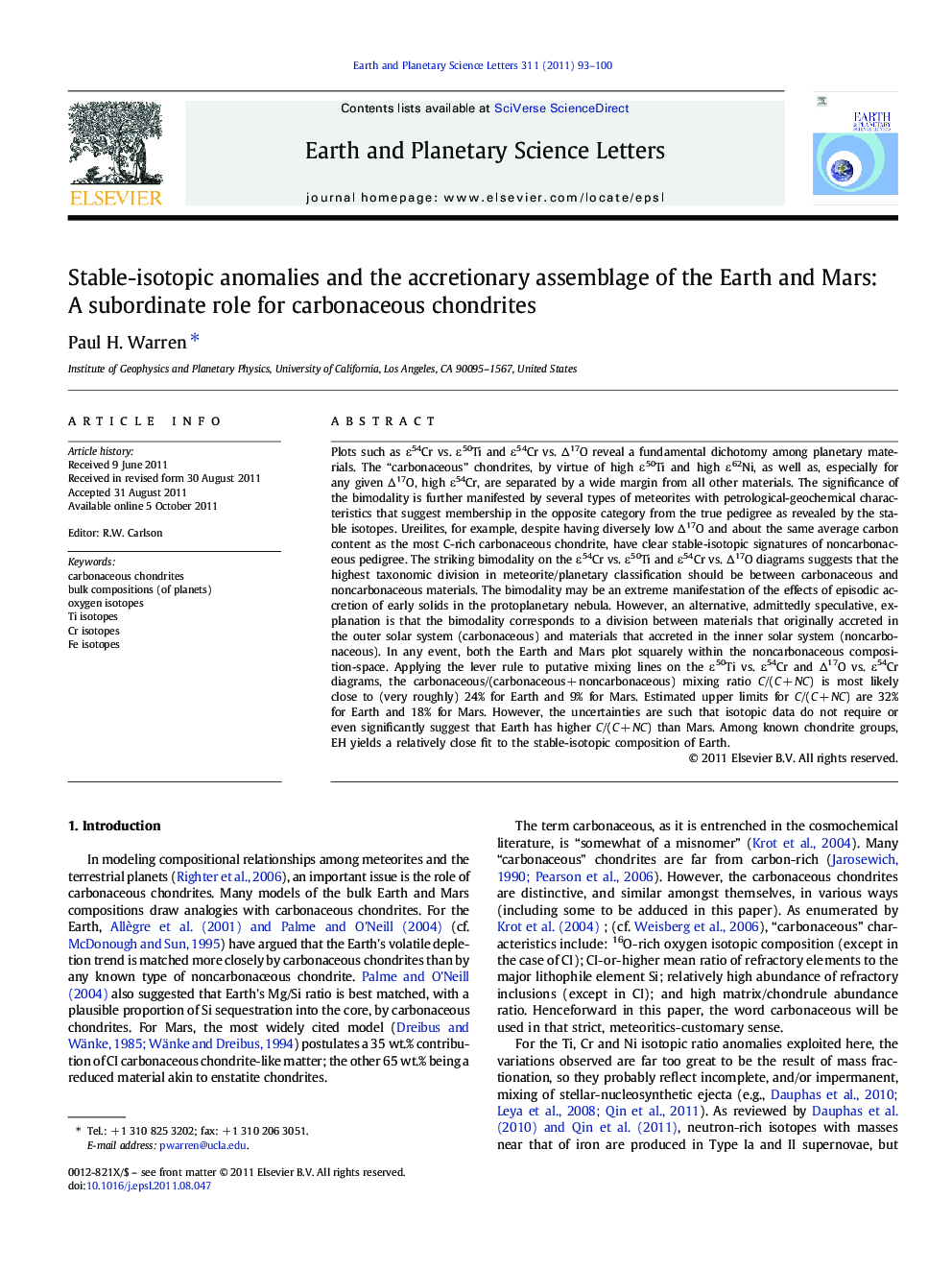| کد مقاله | کد نشریه | سال انتشار | مقاله انگلیسی | نسخه تمام متن |
|---|---|---|---|---|
| 4677683 | 1634818 | 2011 | 8 صفحه PDF | دانلود رایگان |

Plots such as ε54Cr vs. ε50Ti and ε54Cr vs. Δ17O reveal a fundamental dichotomy among planetary materials. The “carbonaceous” chondrites, by virtue of high ε50Ti and high ε62Ni, as well as, especially for any given Δ17O, high ε54Cr, are separated by a wide margin from all other materials. The significance of the bimodality is further manifested by several types of meteorites with petrological-geochemical characteristics that suggest membership in the opposite category from the true pedigree as revealed by the stable isotopes. Ureilites, for example, despite having diversely low Δ17O and about the same average carbon content as the most C-rich carbonaceous chondrite, have clear stable-isotopic signatures of noncarbonaceous pedigree. The striking bimodality on the ε54Cr vs. ε50Ti and ε54Cr vs. Δ17O diagrams suggests that the highest taxonomic division in meteorite/planetary classification should be between carbonaceous and noncarbonaceous materials. The bimodality may be an extreme manifestation of the effects of episodic accretion of early solids in the protoplanetary nebula. However, an alternative, admittedly speculative, explanation is that the bimodality corresponds to a division between materials that originally accreted in the outer solar system (carbonaceous) and materials that accreted in the inner solar system (noncarbonaceous). In any event, both the Earth and Mars plot squarely within the noncarbonaceous composition-space. Applying the lever rule to putative mixing lines on the ε50Ti vs. ε54Cr and Δ17O vs. ε54Cr diagrams, the carbonaceous/(carbonaceous + noncarbonaceous) mixing ratio C/(C + NC) is most likely close to (very roughly) 24% for Earth and 9% for Mars. Estimated upper limits for C/(C + NC) are 32% for Earth and 18% for Mars. However, the uncertainties are such that isotopic data do not require or even significantly suggest that Earth has higher C/(C + NC) than Mars. Among known chondrite groups, EH yields a relatively close fit to the stable-isotopic composition of Earth.
► I review recent Cr, Ti, Ni and oxygen isotopic data for various meteorites.
► Carbonaceous chondrites and a few related meteorites are unrelated to all others.
► Earth and Mars both consist preponderantly of noncarbonaceous materials.
► Upper limit for Earth's carbonaceous/(carbonaceous + noncarbonaceous) ratio is 32%.
► Upper limit for carbonaceous/(carbonaceous + noncarbonaceous) ratio of Mars is 18%.
Journal: Earth and Planetary Science Letters - Volume 311, Issues 1–2, 1 November 2011, Pages 93–100